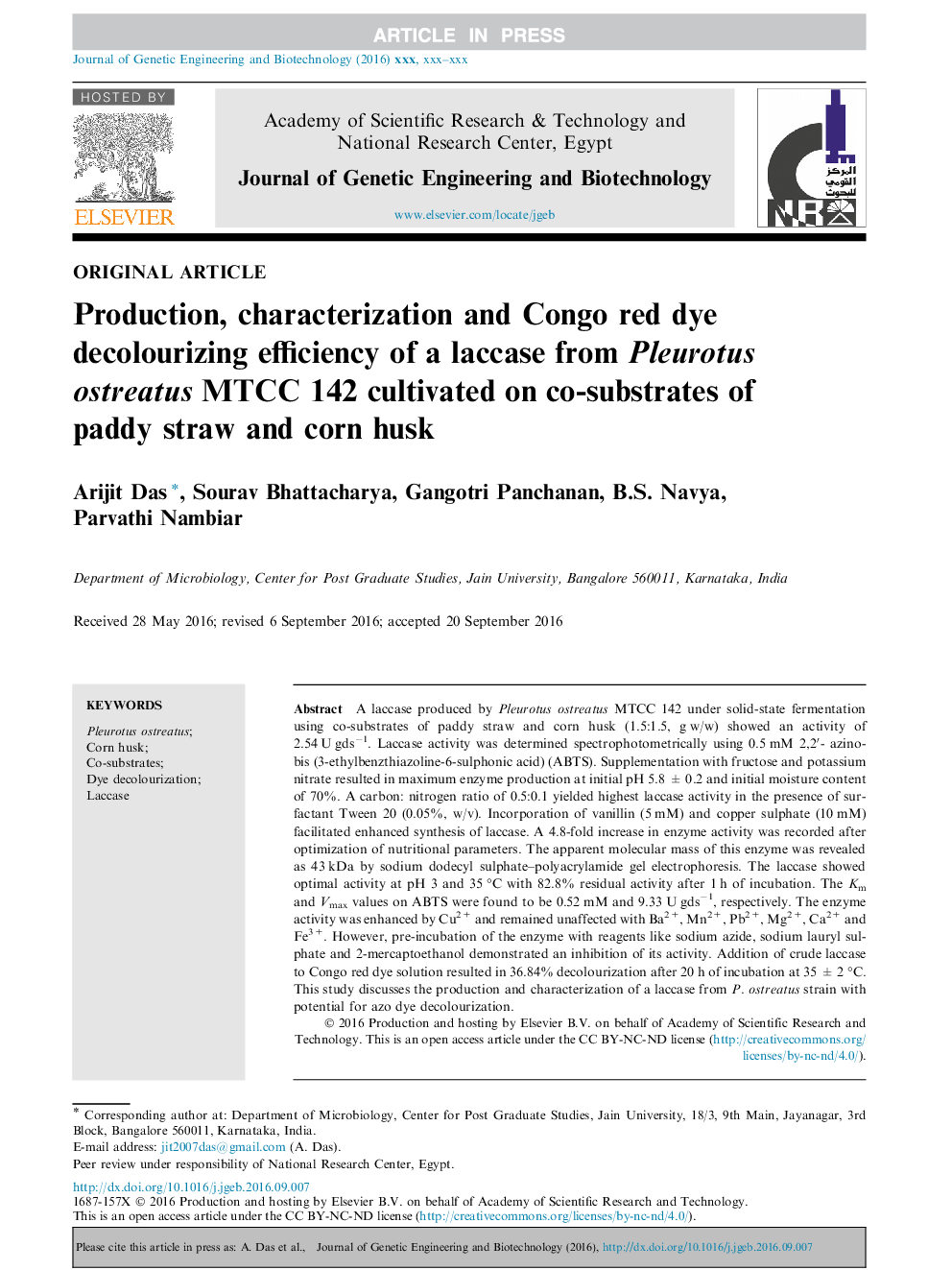| Article ID | Journal | Published Year | Pages | File Type |
|---|---|---|---|---|
| 8416518 | Journal of Genetic Engineering and Biotechnology | 2016 | 8 Pages |
Abstract
A laccase produced by Pleurotus ostreatus MTCC 142 under solid-state fermentation using co-substrates of paddy straw and corn husk (1.5:1.5, g w/w) showed an activity of 2.54 U gdsâ1. Laccase activity was determined spectrophotometrically using 0.5 mM 2,2â²- azino-bis (3-ethylbenzthiazoline-6-sulphonic acid) (ABTS). Supplementation with fructose and potassium nitrate resulted in maximum enzyme production at initial pH 5.8 ± 0.2 and initial moisture content of 70%. A carbon: nitrogen ratio of 0.5:0.1 yielded highest laccase activity in the presence of surfactant Tween 20 (0.05%, w/v). Incorporation of vanillin (5 mM) and copper sulphate (10 mM) facilitated enhanced synthesis of laccase. A 4.8-fold increase in enzyme activity was recorded after optimization of nutritional parameters. The apparent molecular mass of this enzyme was revealed as 43 kDa by sodium dodecyl sulphate-polyacrylamide gel electrophoresis. The laccase showed optimal activity at pH 3 and 35 °C with 82.8% residual activity after 1 h of incubation. The Km and Vmax values on ABTS were found to be 0.52 mM and 9.33 U gdsâ1, respectively. The enzyme activity was enhanced by Cu2+ and remained unaffected with Ba2+, Mn2+, Pb2+, Mg2+, Ca2+ and Fe3+. However, pre-incubation of the enzyme with reagents like sodium azide, sodium lauryl sulphate and 2-mercaptoethanol demonstrated an inhibition of its activity. Addition of crude laccase to Congo red dye solution resulted in 36.84% decolourization after 20 h of incubation at 35 ± 2 °C. This study discusses the production and characterization of a laccase from P. ostreatus strain with potential for azo dye decolourization.
Related Topics
Life Sciences
Biochemistry, Genetics and Molecular Biology
Biotechnology
Authors
Arijit Das, Sourav Bhattacharya, Gangotri Panchanan, B.S. Navya, Parvathi Nambiar,
